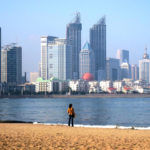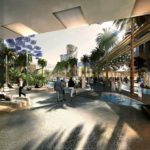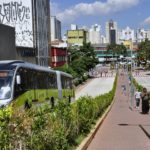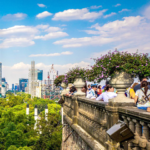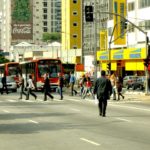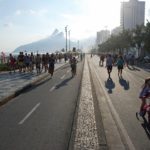Search Results
With urban growth come a number of opportunities to positively transform our cities. And while the unique challenges faced by city leaders are shaped by local contexts and histories, their actions reveal broader trends in how cities worldwide are changing ...

With every year that passes, the challenges to creating the sustainable cities we want to live in seem to multiply. Our cities are growing larger, their roads are more congested, their air quality is deteriorating, and their contributions to climate ...

Do the streets in your city belong to people or cars? In more and more cities worldwide, residents are taking back their streets as public spaces. The open streets movement started in the 1970s with “Sunday Ciclovía” in Bogotá, Colombia, ...

Transport and urban development are inherently linked. Though the majority of residents in many of the world’s biggest cities do not own a car, cities are often designed around the needs of automobiles instead of the needs of people. In ...

Eighty-five percent of Brazilians live, work, and play in cities. As such, urban mobility is a fundamental driver of quality of life for the vast majority of the country, enabling access to jobs, healthcare, schools, and other everyday needs. In ...

What will your ideal city look like in 2030? That is the question of the third annual international blogging contest hosted by Masdar, Abu Dhabi’s renewable energy company behind Masdar City. One winner will receive a paid trip to Abu ...

This is the seventh entry in the Urbanism Hall of Fame series, exclusive to TheCityFix. This series is intended to inform people about the leading paradigms surrounding sustainable transport and urban planning and the thinkers behind them. By presenting their many stories, TheCityFix ...

Every day, more than 31 million people use bus rapid transit (BRT) systems and bus corridors in 189 cities. From Istanbul to Mexico City, BRT is saving people time, improving the environment, and making cities safer, more sustainable places to ...

Over the past decade, many transit agencies in Indian cities have implemented information technology services (ITS) to improve bus planning and operations in urban areas. These typically require huge investments financed either by the city government or by the transit ...

Belo Horizonte, Brazil is a city of remarkable cuisine, green spaces, and architecture. The city is increasingly designed using people-oriented urban development strategies that prioritize the people who make the city come alive. Even for outsiders, this state capital feels like ...

Peru was recently awarded €9 million ($11.14 million) for its urban transport Nationally Appropriate Mitigation Actions (NAMA) by the German and British NAMA facility. This climate finance award will allow the Peruvian government to leverage $50 million from development aid agencies – especially KfW, ...

Like many cities around the world, Indian cities are experiencing urbanization, motorization, and increasing congestion. Coupled with declining public transport use and infrastructure expenditures that promote a car culture by building roads and flyovers (overpasses), Indian cities are losing out ...

Sustainable, accessible, thriving cities are within our reach. Investing in solutions like energy and building efficiency, integrated public transit and better land use and transit planning can improve health, quality of life and economic opportunities in cities. In fact, the ...

In some Brazilian cities, poorly managed urban development has led to “3D” urban form – distant, dispersed, and disconnected. Over the past ten years, demand for urban public transport has decreased by 33% in Brazilian cities while car sales are ...

Rio de Janeiro is one of the world’s leading cities injecting sustainability into its planning. In 2011, Mayor Eduardo Paes enacted an ambitious climate change law, setting a goal to avoid 20% of its emissions by 2020, based on 2005 levels. There ...

Page 81 of 227« First...1020...808182...90100...Last »








